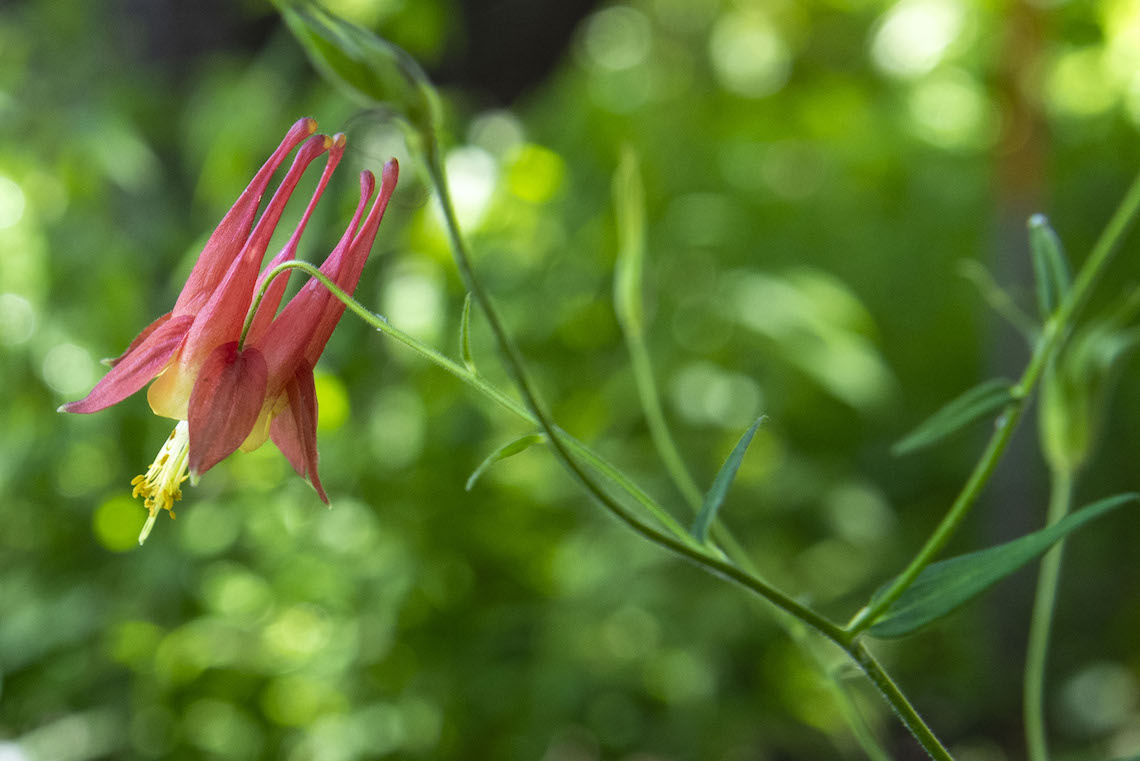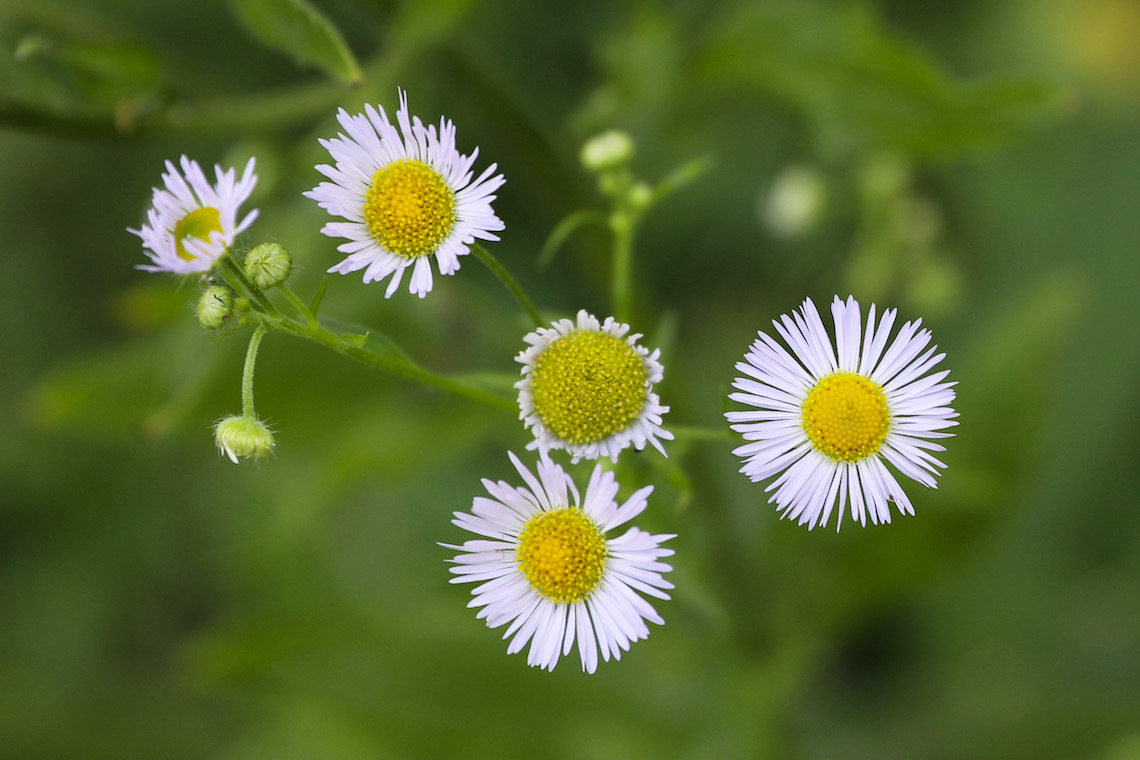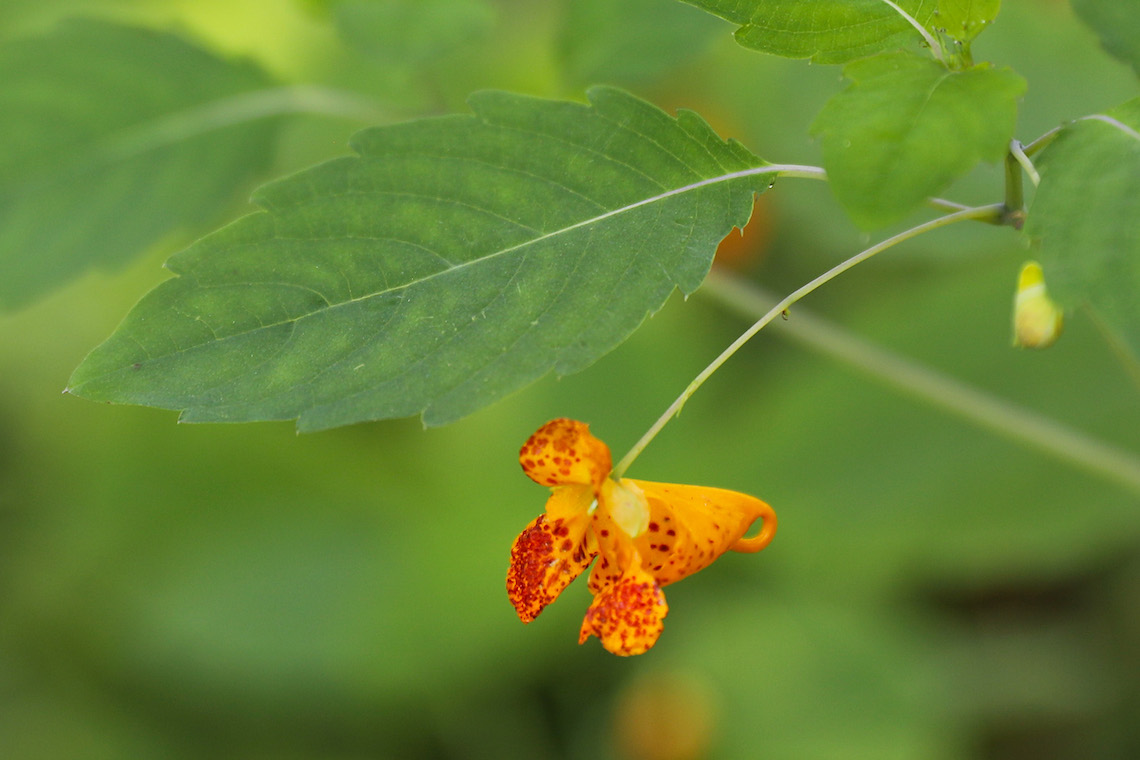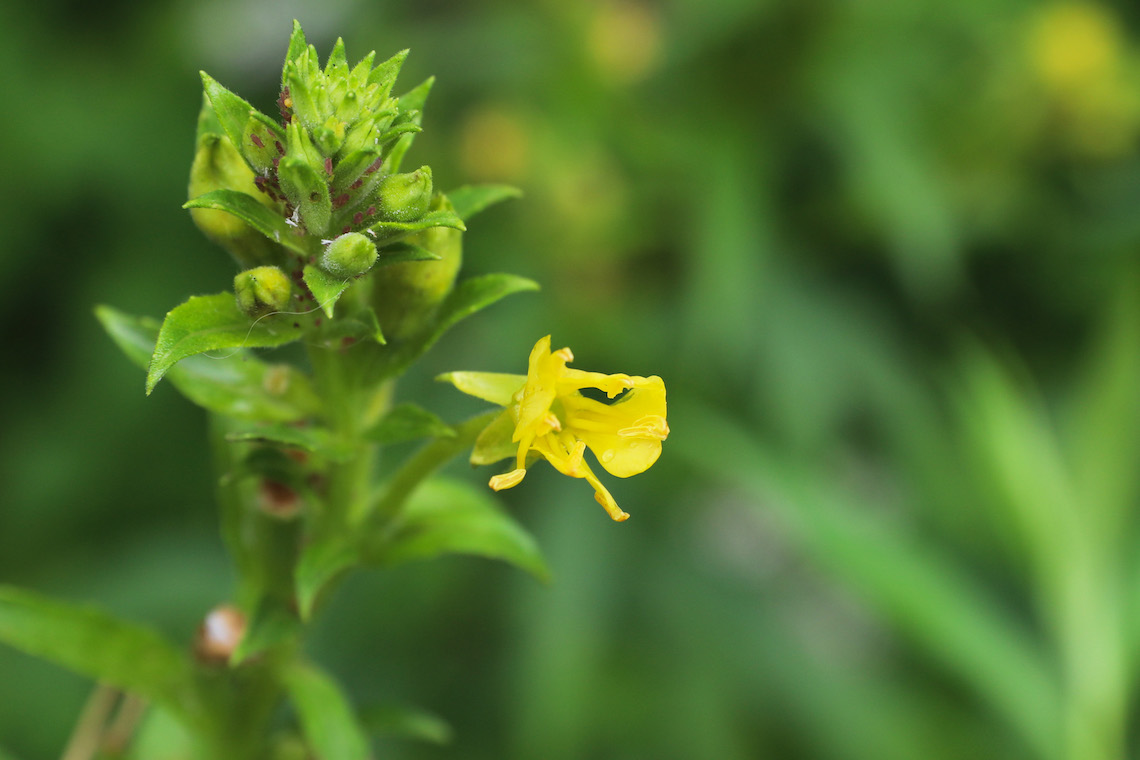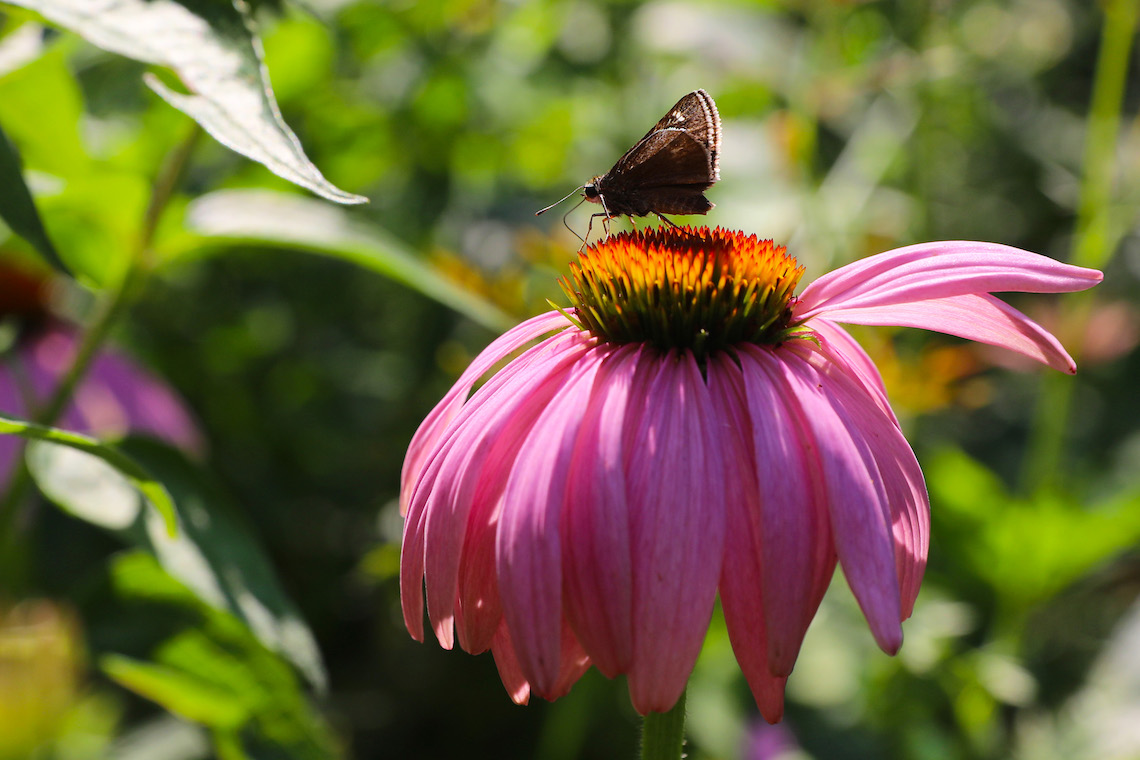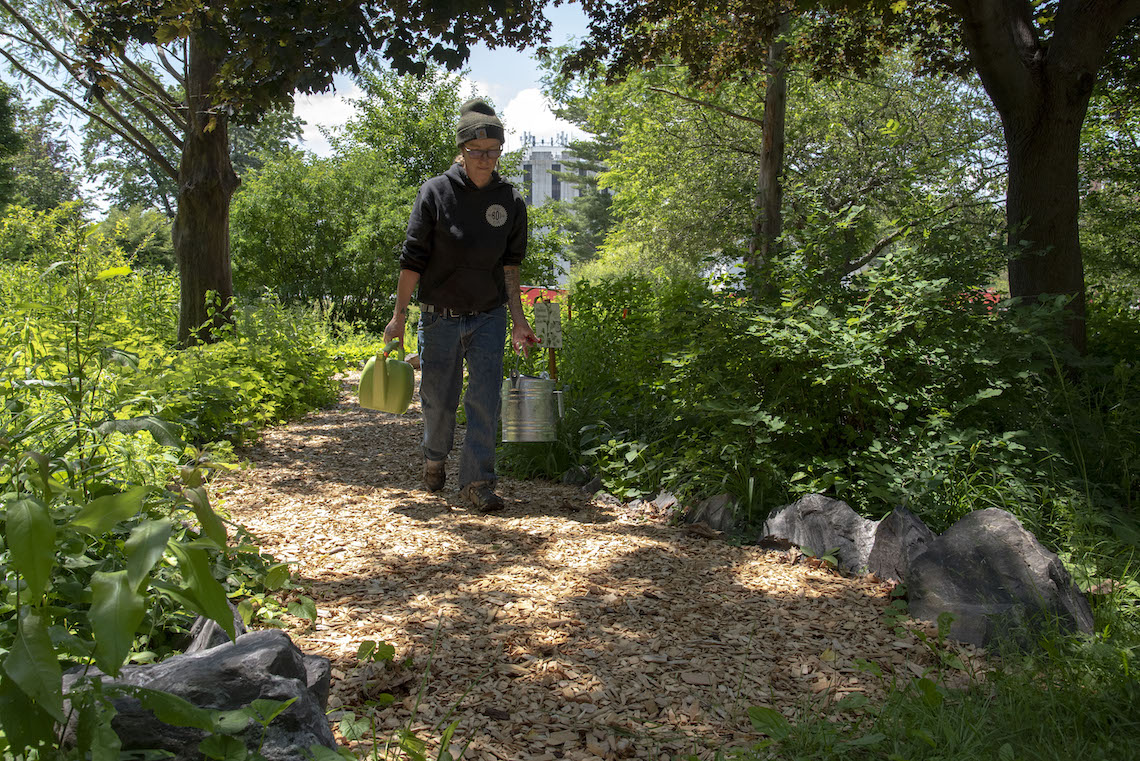
A laptop, a couple of pens, and backpack are typical school supplies. For a handful of students at the University of Southern Maine, however, that checklist also includes a trowel, hose, and watering can.
“I get energy from the plants. I get energy from the sun. I get energy from the air and the wind, everything,” said T. Love Smith. “I just feel so much more happy and light outside.”
Smith is part of a team of students who work with the Office of Sustainability to maintain the pollinator garden on the Portland Campus, near the front entrance to Luther Bonney Hall. Some of the students volunteer their time. For others, like Smith, the job is a work-study assignment.
You don’t need to be an expert horticulturist to qualify for garden duty. Smith is a Media Studies major. The job also attracts students with backgrounds in such varied fields as recreation, outdoor therapy, and project management.
Smith devotes up to 10 hours per week in the garden, spread over three days. That time is spent watering native plants and weeding out invasive species. The goal behind the effort is to create a refuge for pollinators in a sea of mowed lawns and paved roads. As USM’s Director of Sustainability, Aaron Witham supervises the garden’s student caretakers.
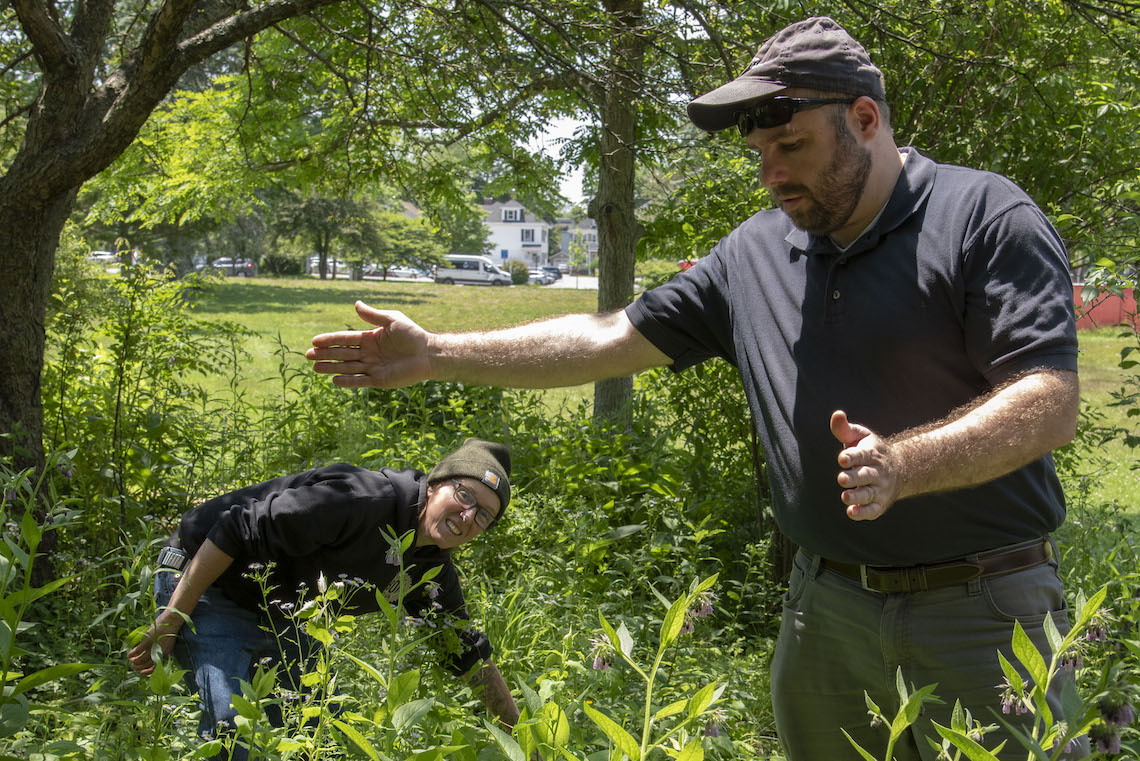
“When you do a project like this with students, hands in the soil, and you’re seeing the plants grow, you’re seeing the pollinators come, you’re seeing the ecosystem develop before your eyes, that is powerful,” said Witham. “The ecosystem is right here on campus. It’s not this abstract thing that’s elsewhere that we’re trying to protect, it’s right here.”
The garden first began taking shape about 15 years ago on an eighth of an acre, bounded by existing trees. Envisioned as a model of permaculture, its architects prioritized self-sufficiency by choosing plants that required minimal upkeep. But as the garden became overgrown with weeds in the following years, visitors tended to stay away.
Witham saw that change was needed. About three years ago, he set out to overhaul the garden with a new focus on attracting pollinators like bees, butterflies, and hummingbirds. Witham gave them the plants they crave by stocking the garden with more than 20 native species.
The red columbines, asters, and yarrows that dot the garden are common sights in the Maine wilderness. But even experienced hikers may not be familiar with butterfly weeds. Though native to Maine, its numbers have dwindled almost to none. By including them in the garden, Witham hopes their wild presence might one day rebound.
The same level of attention is required to keep the non-native species in check. Comfrey, nipplewort, and bittersweet will proliferate quickly if given a chance. As they displace native plants, the pollinators also disappear which threatens the overall health of the ecosystem.
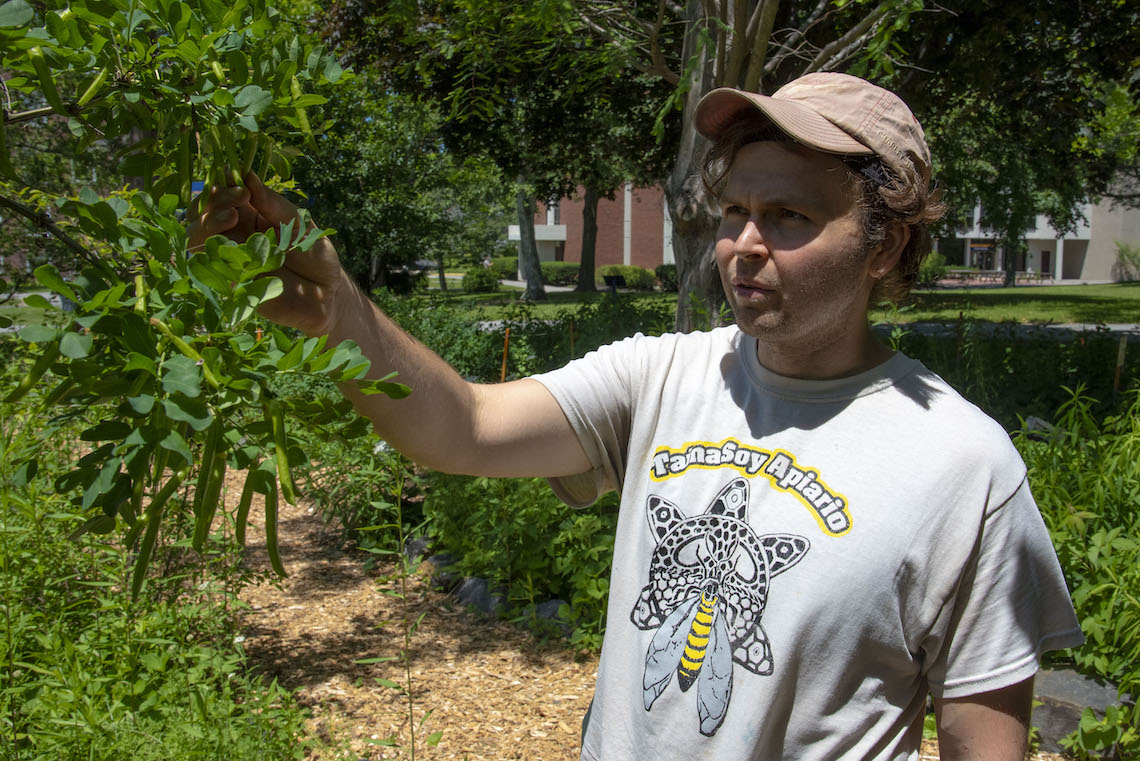
Visitors also play a role in keeping the garden healthy. A false step can crush a seedling and negate all of the hard work that went into its planting. Those dangers are avoided by staying on the designated pathway with its surface of sun-bleached wood chips. For a deeper dive into the underbrush, look for the handful of stepping stones that branch off the main path.
Patrick Foley is another student who spends hours maintaining the garden each week during the lull between classes. He chose gardening from a list of work-study options to unwind from the rigors of the advanced Nursing program.
The beauty of the garden speaks for itself, but Foley wanted to deepen the experience for visitors. He took a lead role in designing a series of five signs that were installed on Thursday, July 27, at strategic locations throughout the garden.
The signs invite visitors to use their senses of sight, smell, touch, and hearing to notice specific aspects of their surroundings depending on the time of year. Visitors can also use their cell phones to scan a QR code on each sign for more information on the garden’s flora and fauna. Foley is proud to have made such a lasting impact on campus.
“I know that the garden is gonna be here and some of the stuff I planted is gonna continue to thrive over time,” Foley said. “In a few years I’ll come back and hopefully it’s looking even more lush.”
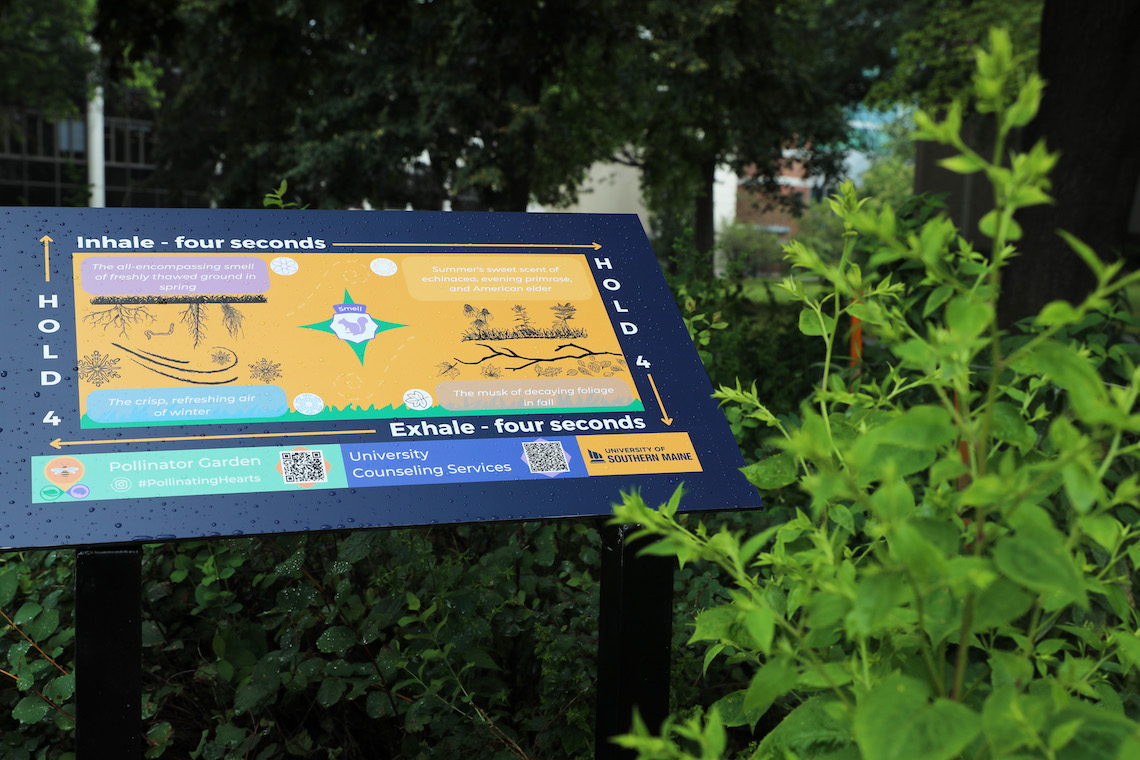
The future that Foley foresees for the garden wasn’t always so certain. The open spread of grass that flanks it will soon be a construction site. A new Center for the Arts will take shape over the next year. In early discussions, planners wondered if the center’s footprint would snuff out the garden. Witham sat on the building committee and spoke on the garden’s behalf.
He pointed to its benefits for research. Students from the Environmental Science and Policy Department take soil core samples from the garden for classroom analysis. The natural setting also serves as a mental health respite, away from the glow of cell phones and laptops. And the skills that students learn while tending its soil make good additions to their résumés.
Witham’s points resonated with the committee. Not only did the full membership agree to preserve the garden, they incorporated it into the layout around the new facility with a pathway to connect them. The garden will remain open throughout construction as a leafy buffer against the nearby dust and commotion.
The enthusiasm for gardening is also apparent on the Gorham Campus. Two small vegetable gardens are new as of this year. One of them is located near the front entrance of Corthell Hall and the other is bisected by a walkway leading up to Brooks Student Center. The idea for the gardens came from President Jacqueline Edmondson.
“Edible landscaping is a way to build community and to make healthy food accessible to our community in the spaces where we walk daily,” Edmondson said. “It is also a way to create beautiful spaces on our campuses as fruits and vegetables flower and grow. I encourage everyone to enjoy!”
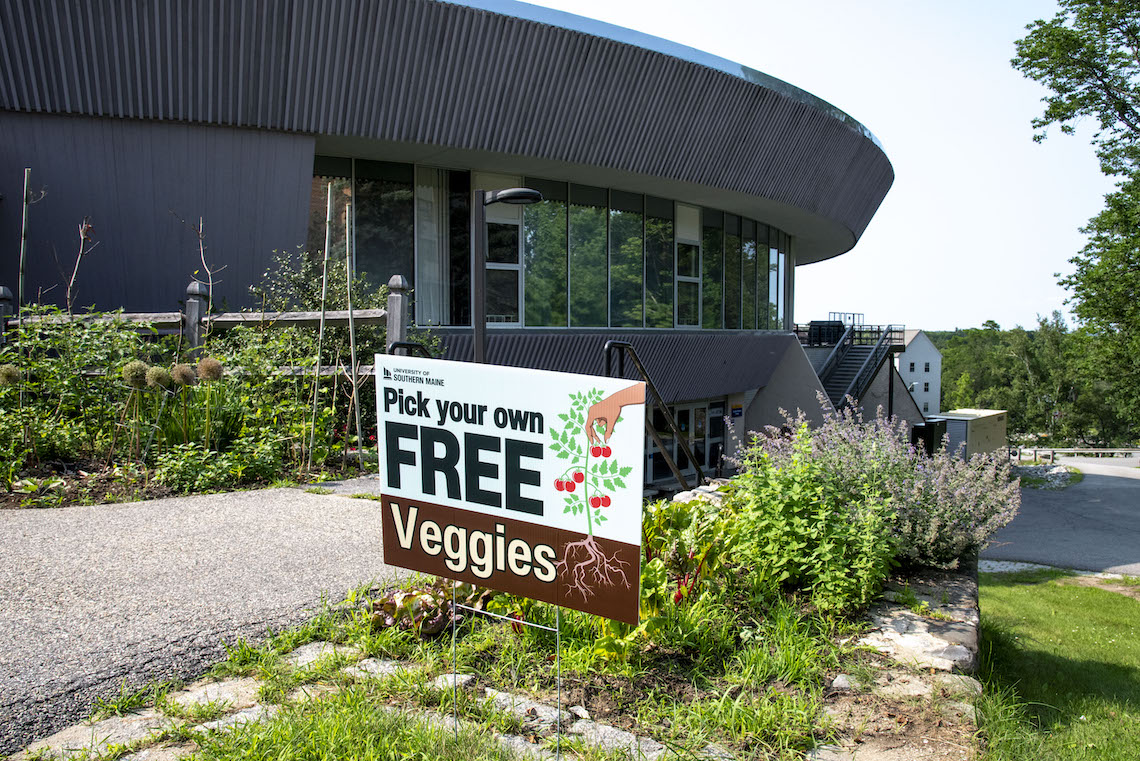
Witham coordinated the effort to execute the president’s vision. He briefed groundskeepers on the project and they did the planting. The finishing touch was a sign proclaiming that the vegetables were free for the taking. Credit for the sign’s design goes to Zack Morin, a graduate student in the Counselor Education program.
The list of pickable vegetables includes tomatoes, lettuces, cucumbers, eggplants, zucchinis, and more. The early harvest was smaller than expected due to a raid by hungry wildlife. But the next crop cycle is showing promise. Witham hopes the wildlife will stay away once the campus fills up with students for the fall semester.
There is also a food component to the pollinator garden in Portland. Apples and cherries dangle from the tree branches overhead. Blueberries, strawberries, and rhubarb can be found closer to the ground. They too are meant to be picked and enjoyed by students as well as residents of the surrounding neighborhood.
USM’s gardens are a small step in the right direction toward locally-sourced food and environmental stewardship. A team effort is required to enact change on a larger scale. By serving as an example, the gardens invite its visitors to join the team.
“If everybody just transformed their own backyard into a little pollinator garden, that amount of space, the difference it would make in the ecosystem would just be multiple times more than all the national parks combined,” Witham said.
Native species found in the pollinator garden
